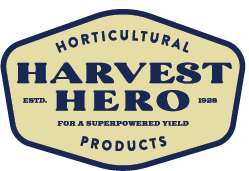Turn Your Trash Into Nutrient-Rich Soil by Composting

Food scraps and yard waste contribute to more than 30% of the trash we throw away every day. What if your trash could become your garden’s treasure? It’s possible when you compost organic material! Learn how you can reduce the need for chemical fertilizers and create nutrient-rich soil by composting.
The Benefits of Composting
There are many reasons to compost, whether or not your main goal is to support your gardening:
- When mixed with your soil, compost helps retain moisture and protect your plants against biotic stresses.
- Compost reduces the need for chemical fertilizers, supporting your efforts to grow organically.
- This powerful soil additive encourages the production of beneficial bacteria and fungi that break down organic matter. This creates a nutrient-filled material called humus.
- Composting helps lower your carbon footprint by reducing the trash in the landfill that can produce methane emissions.
What You Can and Cannot Compost
Compost requires three basic ingredients to help you reap the benefits of your efforts:
- Browns: Brown ingredients in your compost include dead leaves, branches, and twigs. These components provide carbon.
- Greens: Green items for your compost include vegetable waste, fruit scraps, grass clippings, and coffee grounds (yes, even though coffee is technically brown!). These ingredients provide nitrogen.
- Water: Water helps develop the compost into a natural fertilizer for your garden by breaking down the organic matter.
Browns and greens should be used in equal amounts so this natural fertilizer provides the right amount of carbon and nitrogen.
What You Can Compost:
- Fruits and vegetables
- Coffee grounds and filters
- Eggshells
- Tea bags
- Nutshells
- Clean shredded paper products
- Yard trimmings
- Plants
- Sawdust and wood chips
- Hair and fur
- Fireplace ashes
What You Can’t Compost:
- Black walnut tree leaves or twigs because they release substances that are harmful to plants
- Coal or charcoal ash
- Dairy products, which can create odor problems and attract pests
- Diseased plants
- Fats, grease, and oils
- Meat or fish scraps and bones
- Pet waste
- Plants and yard trimmings treated with chemicals
How to Compost at Home
There are two ways you can compost at home: outdoors and indoors. Both help you reap the benefits of composting, though your outdoor compost will allow you to support bigger gardens.
Outdoors
If properly cared for, your compost can be ready in two months to two years. It’s a time commitment that’s worth it once you see how it supports your plant growth.
To compost outdoors, you’ll need a compost pile or bin, pitchfork, square-point shovel, water source, and tarp (optional).
Step 1: Set up your compost pile or bin in a dry, shady spot. If you don’t have a hose nearby, remember you will have to transport your water yourself, so try not to make it too far away from your water source.
Step 2: Begin adding your brown and green materials as they are collected. Chop or shred larger pieces that take longer to compost. Many people leave a bucket or bowl on their counter to collect green scraps. Be sure to deliver it to your compost pile and bin every day so you don’t accidentally attract pests.
Step 3: Keep your compost moist to help break down the brown and green material.
Optional: cover it with a tarp to help keep the moisture locked in.
Step 4: Once established, begin burying the fruit and vegetable waste approximately 10″ under the top of the compost.
Your compost is ready to use when the material at the bottom is dark and rich in color.
Indoors
You can still compost at home, even if you don’t have a place to do so outdoors. You will need a special bin meant for composting to ensure your compost has the right environment and doesn’t attract pests or rodents.
Step 1: Buy your compost container at your local hardware store, or look up ways to DIY the container. Set it up.
Step 2: Add your brown and green ingredients. Tend to your pile, and keep track of what you add in so you can aim for your 1:1 combination of brown and green.
Step 3: Mix your compost regularly and ensure it stays moist.
Indoor compost can be ready for use in your garden in as little as two to five weeks.
Take Control of Your Plant’s Nutrition and Growth with Harvest Hero
Combine Harvest Hero Enhanced Perlite Mix with your compost and your plants will be set up for growing success. Enhanced Perlite Mix is a nutrient-rich soilless amendment and growing medium that is a 3-in-1 blend comprised of perlite, diatomaceous earth, and essential nutrients. This patent-pending mix has been designed by Harvest Hero’s team of engineers and agronomists to improve soil structure for nutrition which promotes bigger plants and bigger yields. Harvest Hero Enhanced Perlite Mix will meet your plants’ needs throughout the first critical 6 weeks of growth by improving soil quality, providing plant nutrients, and amending soil properties to make it easier for the plant to absorb and translocate essential plant nutrients to the root system.
Consisting of domestically sourced perlite, diatomaceous earth, and essential nutrients, Harvest Hero’s 3-in-1 Enhanced Perlite Mix is unlike anything on the market. Try it today and see the difference Harvest Hero makes in your home garden! Get FREE SHIPPING until July 31, 2022 on all 16 qt. and 24 qt. bags. Use code FREESHIPPING722.



